 It’s time for our monthly look at market risk factors. Just as with the economy, there are several key factors that matter for the market, in determining both the risk level and the immediacy of that risk. Although the recent pullback is largely in the rearview mirror, given valuations and recent market behavior, it's still useful to keep an eye on these factors.
It’s time for our monthly look at market risk factors. Just as with the economy, there are several key factors that matter for the market, in determining both the risk level and the immediacy of that risk. Although the recent pullback is largely in the rearview mirror, given valuations and recent market behavior, it's still useful to keep an eye on these factors.
Risk factor #1: Valuation levels
When it comes to assessing valuations, I find longer-term metrics—particularly the cyclically adjusted P/E ratio, which looks at average earnings over the past 10 years—to be the most useful.
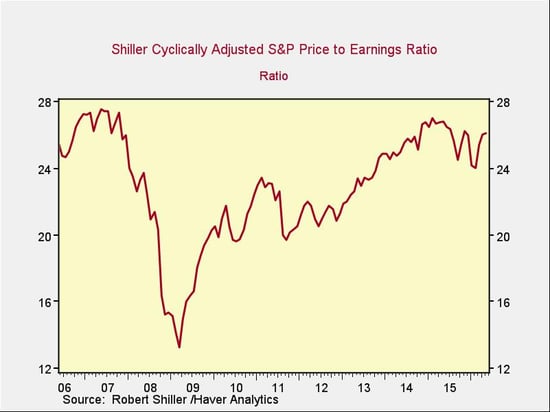
Two things stand out here:
- First, valuations are approaching the levels of 2007–2008, which speaks for itself.
- Second, even at the bottom of the recent pullback, valuations were at levels above any point since before the financial crisis.
Although close to the highest levels of the past 10 years, valuations remain well below the 2000 peak, so you could argue that this metric isn’t suggesting high risk. Of course, that assumes we might head back to 2000 bubble conditions, which doesn't exactly mean risks are low.
Risk factor #2: Changes in valuation levels
Another way to use this data is to look at the changes in valuation levels over time as an indicator of trouble ahead.
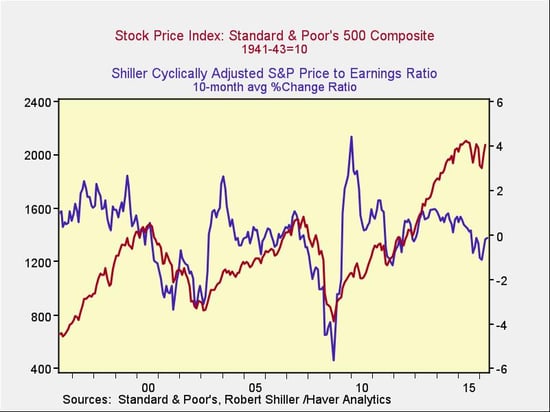
Here, you can see that when valuations roll over, with the change dropping below zero over a 10-month or 200-day period, the market itself typically drops shortly thereafter. With the recent recovery, we have just about moved out of the trouble zone and continue to advance in the right direction.
Risk factor #3: Margin debt
Another indicator of potential trouble is margin debt.
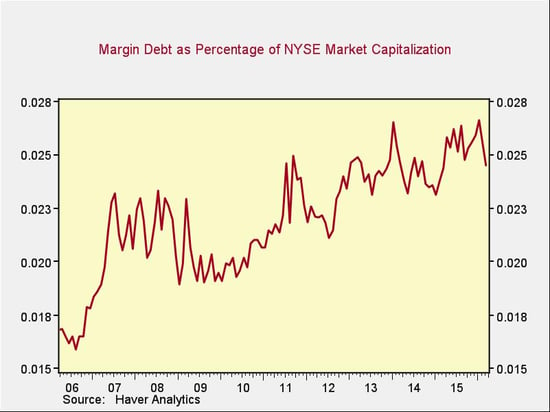
The chart shows that, as a percentage of market capitalization, margin debt remains close to an all-time high and near the level of 2000. With the market recovery and some de-risking by borrowers, however, debt levels have moved down somewhat. I think this continues to be an indicator of higher risk, but with recent improvements, not necessarily immediate risk.
Risk factor #4: Changes in margin debt
Consistent with this, if we look at the change in margin debt over time, even as the absolute risk level remains high, the immediate risk does not. The spike in debt that preceded the most recent pullback is coming down, moving away from the risk zone.
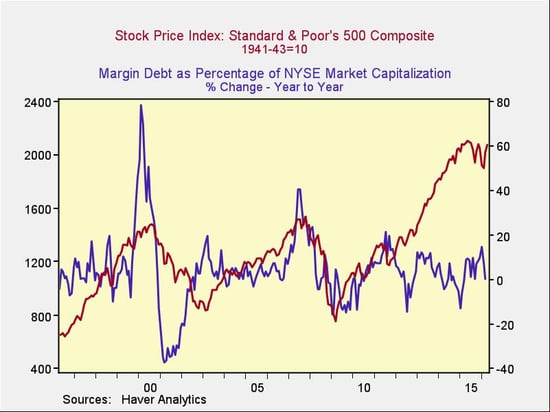
Basically, though the absolute level of margin debt is high and so is the risk level, the trigger seems to be getting farther away.
Risk factor #5: The Buffett indicator
Said to be favored by Warren Buffett, the final indicator is the ratio of the value of all the companies in the market to the national economy as a whole.
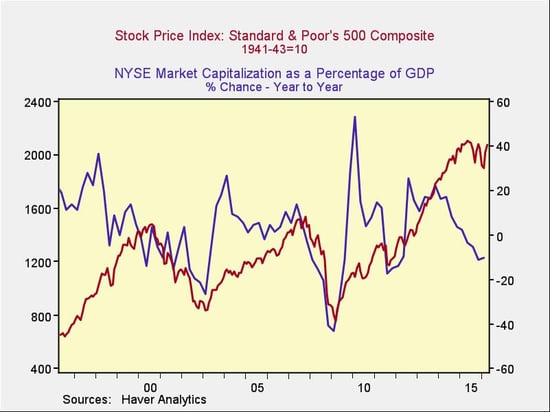
On an absolute basis, this indicator is actually somewhat encouraging. Although it remains high, it has pulled back to less extreme levels. On a change-over-time basis, however, downturns in this indicator have typically led market pullbacks—and once again, we see that here. With the recent uptick, though, this indicator also suggests the risks are not pressing.
Risks apparent, but not immediate
Despite the substantial recovery in stock prices, market risk factors are clearly still apparent, if not immediate. Technicals are reasonably encouraging, with both the Dow and the S&P 500 back above their 200-day trend lines. The Nasdaq, however, just dropped below its trend line, so we may not be out of the woods yet.
There’s a big difference between high risk and immediate risk—and it is one that is crucial to investing. Not all of the indicators suggest an immediate problem, and several suggest risk is receding, which means we may well have seen the worst of it this time.


 Print
Print


